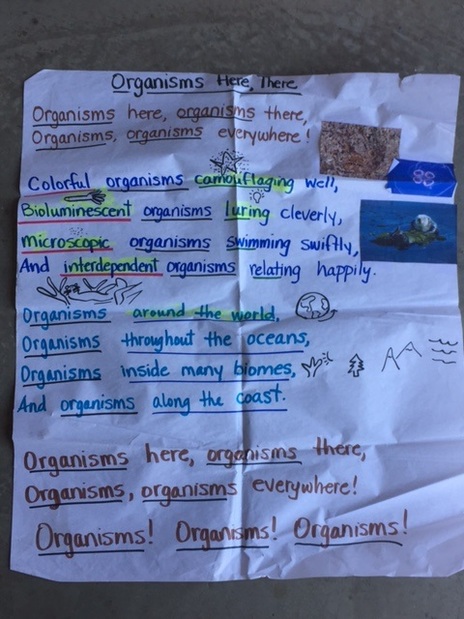|
CHANTS
Chants are an integral part of the Guided Oral Practice Component of Project GLAD. They are introduced at the beginning of a unit and used throughout the unit for patterning, fluency and vocabulary development. Every GLAD unit should have multiple chants, including a Here, There Chant, which is a direct scaffold for the Sentence Patterning Chart. STEP-BY-STEP The teacher writes up chants in different colors to chunk stanzas or repeating phrases. Teacher models the tune first for the students without pointing to the words for phonemic awareness. Teacher then point to the words and has students sing along too supporting phonics instruction. After having sung the chant a few times, teacher asks students to self select vocabulary. Tell students to notice any words that are high level, new for their brains, scientific or historical. After a heads together, they tell the teacher their words, and WHY they chose that word. Teacher highlights and sketches or adds pictures to teach vocabulary and extend knowledge. EXTENSIONS Chants can become a Team Task. Teams pick a song and write lyrics for it that go with the unit of study. The song/rap/chant is then performed during Team Presentations. COMMON CORE CONNECTIONS: Anchor Standards for Reading
Anchor Standards for Speaking and Listening
|

